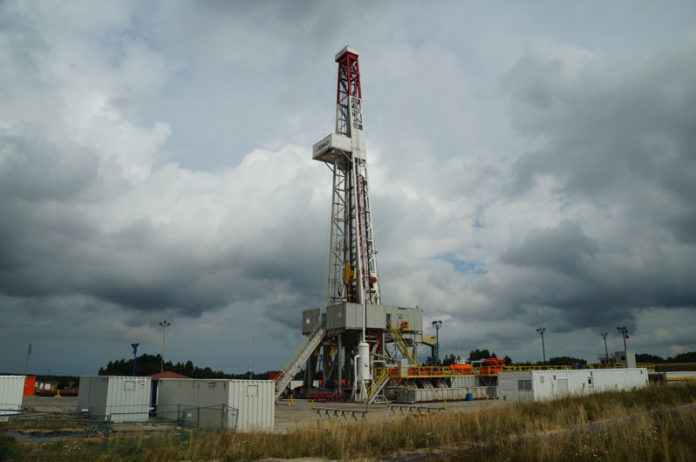Wireline is commonly used to perform various well-logging operations to find more information about the wellbore and surrounding formation.
Some examples of the formation characteristics that can be determined with the help of logs are rock type, porosity, fluid types, and pay zone size.
Usually, a combination of different logging tools is used to get a full picture of the downhole conditions.
Depending on the wireline used and job objectives the downhole data can either be transferred to the surface right away or stored on the wireline tool and retrieved later when it gets to the surface.
Wireline logging can be divided into two main branches: open hole and cased hole.
An open hole means that the metal casing wasn’t installed in the well yet and it wasn’t cemented.
Cased hole logging is performed on the wells with casing installed.
Related: What is Wireline?
Types of Open Hole Wireline Logging Operations
Gamma Ray Logging
Used to detect natural radiation emitted by the formation.
This data can be used to distinguish between different reservoir rocks and determine reservoir thickness. It is also used to correlate other logs.
Formations like shale and clay with high potassium content are more radioactive than sandstone or limestone.
Since gamma rays can penetrate casing, gamma-ray logging can be performed in the cased hole as well.
Sonic Logging
Used to measure how fast the sound travels through the formation.
This data can be used to calculate porosity and the type of rocks in the formation.
Spontaneous Potential Logging
Performed to find out the electrical potential created along the wellbore to determine the rock and fluid types.
One of the electrodes is placed at the surface while the other one is run in a well.
Caliper Logging
Used to measure the size of the hole.
Usually, a downhole tool with some type of spring legs is used for that.
The data acquired can be used to determine the amount of cement required to secure the casing.
Density Logging
Performed by emitting the radiation from the tool and measuring how the formation responds to it.
Used in determining the porosity of the formation.
Resistivity Logging
Performed to determine the resistivity of the formation rock.
Saltwater will have much lower resistivity than hydrocarbons.
Neutron Logging
Performed by emitting neutrons from the tool and then determining how they interact with a formation.
The neutrons are affected by the number of hydrogen atoms in the formation.
Liquids like water and oil can be easily detected because of the high amount of hydrogen atoms.
Neutron logging is performed to determine the porosity of the formation.
Related: What is Mud Logging?
Types of Cased Hole Wireline Logging Operations
Production Logging
A special tool is run in the well to determine which zones are producing.
This tool usually has some type of spinner to measure fluid velocity.
Can also be used in combination with temperature and pressure sensors to get a better understanding of the production and injection zones.
Cement Bond Logging (CBL)
Performed to determine cement integrity between the casing and the formation.
Related: What is Cementing in Oil and Gas?
Alternatives to Wireline Logging
Using a wireline is not the only way to perform well logging and there are a few other ways to do it.
One is logging while drilling (LWD) and it is performed in real-time while drilling the well.
The logging tool is usually attached to the top of the drilling bottom hole assembly and the data can be either send to the surface via mud pulses or be stored in the tool until it is pulled to the surface.
Fiber optic well monitoring is becoming more common as well for production logging.
Fiber optic cable can either be permanently installed in the casing or run inside of the coiled tubing.
Fiber optic is a little more expensive option but it gives a much better picture of wellbore production and injection profile in comparison to conventional production logging tools.
Related: What is Coiled Tubing?
References
https://wiki.aapg.org/Basic_cased_hole_tools
https://wiki.aapg.org/Open_hole_tools
